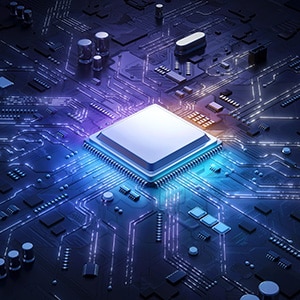Silicon Carbide (SiC) devices are a type of wide-bandgap semiconductor technology that has gained attention for its superior performance compared to traditional silicon-based devices. SiC is a compound of silicon and carbon and is known for its excellent material properties, allowing the development of high-performance electronic devices. 
Here’s a general overview of how SiC devices work:
- Material Properties:
- Wide Bandgap: One of the key advantages of SiC is its wide bandgap, which is significantly larger than that of silicon. This wide bandgap allows SiC devices to operate at higher temperatures, voltages, and frequencies without suffering from the same level of performance degradation as silicon-based devices.
- Types of SiC Devices:
- SiC MOSFETs (Metal-Oxide-Semiconductor Field-Effect Transistors): These are voltage-controlled devices that use the same principles as silicon MOSFETs but leverage the superior material properties of SiC for higher efficiency and faster switching speeds.
- SiC Schottky Diodes: SiC diodes exploit the material’s characteristics to provide fast switching, low forward voltage drop, and high-temperature operation.
- SiC MOSFET Operation:
- Gate Control: SiC MOSFETs operate by applying a voltage to the gate terminal, creating an electric field that controls the flow of charge carriers (electrons or holes) between the source and drain terminals.
- Wide Bandgap Benefits: The wide bandgap allows SiC MOSFETs to handle higher electric fields, resulting in better performance at high voltages. Additionally, SiC MOSFETs exhibit lower on-state resistance (Rdson) and faster switching speeds compared to traditional silicon MOSFETs.
- SiC Schottky Diode Operation:
- Rectification: SiC Schottky diodes are used for rectification in power electronic circuits. They have a metal-semiconductor junction, and the absence of a P-N junction reduces forward voltage drop and switching losses.
- Fast Switching: The absence of a reverse recovery charge in SiC Schottky diodes leads to fast switching speeds, reducing switching losses.
- Applications:
- Power Electronics: SiC devices are commonly used in power electronic applications, such as power converters, inverters, and motor drives. Their high-temperature tolerance, efficiency, and fast switching speeds make them suitable for these applications.
- Electric Vehicles (EVs): SiC devices contribute to the efficiency and performance of electric vehicle powertrains by enabling higher switching frequencies and reducing losses.
- Advantages:
- Higher Temperature Operation: SiC devices can operate at higher temperatures than traditional silicon devices.
- Higher Efficiency: The superior material properties of SiC contribute to lower conduction and switching losses, leading to higher overall efficiency in power electronic systems.
- Reduced Size and Weight: SiC devices allow for the design of smaller and lighter power electronic systems due to their improved performance.
While SiC devices offer numerous advantages, their adoption is influenced by factors such as cost and manufacturing challenges. As technology advances, ongoing research and development aim to address these challenges, making SiC technology even more competitive in various applications.




























































